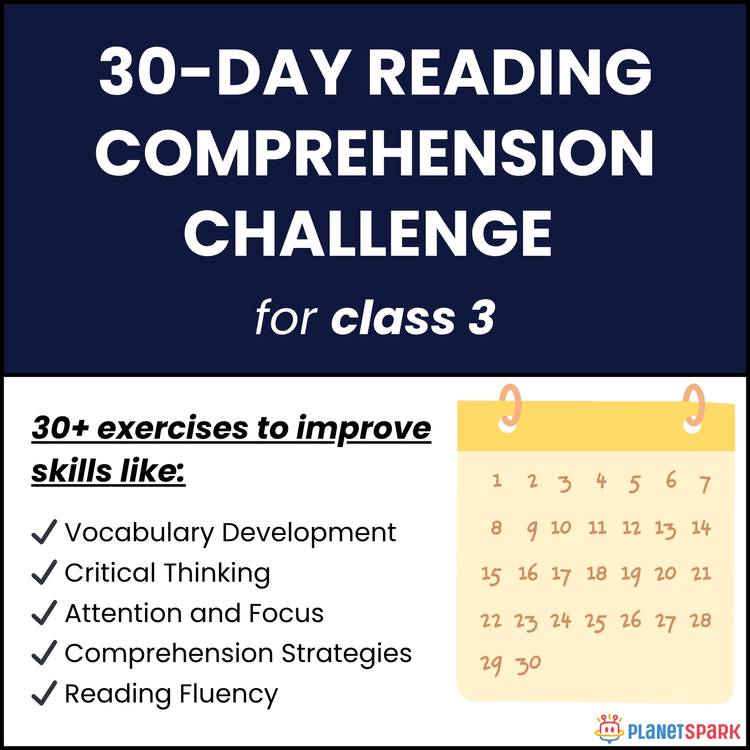Aunt Jennifer’s Tigers Summary, Q&A, Themes, Analysis and More!
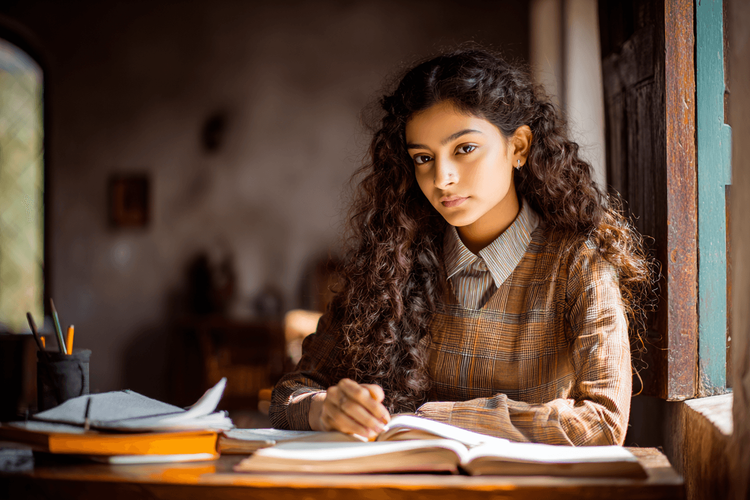
Table of Contents
- Aunt Jennifer’s Tigers Summary
- Aunt Jennifer's Tiger NCERT Solutions
- About the Author – Adrienne Rich
- Themes of Aunt Jennifer’s Tigers Poem
- Symbolism in Aunt Jennifer’s Tigers
- Poetic Devices in Aunt Jennifer’s Tigers
- Key Takeaways from Aunt Jennifer’s Tigers
- Analysis of Aunt Jennifer’s Tigers
- Readers Also Read
- Learn More About Poems Like Aunt Jennifer’s Tigers with Plan
- Conclusion
- FAQs – Aunt Jennifer’s Tigers
Aunt Jennifer’s Tigers by Adrienne Rich is a popular poem in the class 12 syllabus, highlighting women’s struggles and desire for freedom. The fearless tigers in her embroidery contrast with Aunt Jennifer’s life of fear and burden. In this Aunt Jennifer’s Tigers summary, we will go through the poem stanza by stanza, explore its themes, symbolism, and poetic devices, and understand how Rich portrays the difference between reality and imagination. This poem is widely studied for its powerful message about women’s suppressed voices and the courage expressed through art.
Aunt Jennifer’s Tigers Summary
Stanza 1
Aunt Jennifer's tigers prance across a screen.
Bright topaz denizens of a world of green.
They do not lear the men beneath the tree;
They pace in sleek chivalric certainty.
Summary
The poem begins by describing the tigers that Aunt Jennifer embroiders. These tigers are fearless, proud, and confident, moving freely in a vibrant world. They are completely independent and unafraid, unlike Aunt Jennifer herself. The tigers represent the courage, strength, and freedom that Aunt Jennifer wishes she could possess. Through this contrast, the poet highlights the difference between Aunt Jennifer’s oppressed life and the fearless world of her imagination expressed through art.
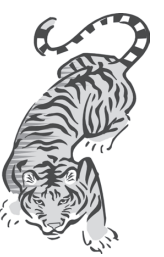
Learn, Analyze, and Score Better
Try a PlanetSpark Demo Today!
Stanza 2
Aunt Jennifer's fingers fluttering through her wool
Find even the ivory needle hard to pull.
The massive weight of Uncle's wedding band
Sits heavily upon Aunt Jennifer's hand.
Summary
The second stanza focuses on Aunt Jennifer’s own life. Her fingers tremble as she works on her embroidery, struggling even to pull the needle through the wool. The “massive weight of Uncle’s wedding band” symbolizes the control and authority of her husband, as well as the societal pressures and responsibilities that burden her. This stanza emphasizes her physical and emotional weakness, showing how her life is confined by fear, duty, and male dominance.
Stanza 3
When Aunt is dead, her terrified hands will lie
Still ringed with ordeals she was mastered by.
The tigers in the panel that she made
Will go on prancing, proud and unafraid.
Summary
The final stanza reflects on the lasting impact of Aunt Jennifer’s work. Even after her death, her hands will remain “ringed with ordeals she was mastered by,” signifying the lifelong struggles and oppression she endured. However, the tigers she created will continue to prance proudly and fearlessly, untouched by fear or oppression. Through her embroidery, Aunt Jennifer achieves a form of freedom and leaves behind a symbol of courage that endures beyond her lifetime.
Overall Summary
The poem is a commentary on women’s oppression and their desire for freedom. Aunt Jennifer represents women who are suppressed by societal norms and marital constraints. The embroidered tigers act as a symbol of strength, independence, and fearlessness, qualities Aunt Jennifer admires but cannot express in her real life. Adrienne Rich effectively uses imagery, symbolism, and contrast to convey the tension between reality and aspiration, showing how art can serve as a medium for expressing hidden desires and inner strength.
Aunt Jennifer's Tiger NCERT Solutions
1. How do 'denizens' and 'chivalric' add to our understanding of the tiger's attitudes?
The word ‘denizens’ means inhabitants or residents. By calling the tigers “denizens of a world of green,” the poet suggests that they fully belong to their world and move confidently within it. They are natural and fearless in their environment.
‘Chivalric’ refers to qualities like bravery, nobility, and honor. The tigers’ “chivalric certainty” shows that they move with grace, courage, and pride. They are independent and unafraid, highlighting the contrast between the tigers’ boldness and Aunt Jennifer’s fearfulness.
2. Why do you think Aunt Jennifer's hands are 'fluttering through her wool' in the second stanza? Why is she finding the needle so hard to pull?
Aunt Jennifer’s hands are described as fluttering, indicating nervousness, weakness, or trembling. This shows her lack of confidence and the physical strain she experiences.
She finds the needle hard to pull because of the heavy burden of her married life, symbolized by her husband’s dominance and societal expectations. The act of sewing, though normally simple, becomes difficult due to her anxiety and fear.
3. What is suggested by the image 'massive weight of Uncle's wedding band'?
The wedding band represents not just her husband but also the patriarchal control and oppressive responsibilities imposed on her.
The word ‘massive weight’ emphasizes how suffocating and restrictive this burden is. It shows that Aunt Jennifer’s life is dominated by fear and submission, limiting her freedom and self-expression.
4. Of what or of whom is Aunt Jennifer terrified in the third stanza?
In the third stanza, Aunt Jennifer is terrified of her life under patriarchal constraints. The “ordeals” she faces are societal pressures, marital dominance, and lack of personal freedom.
The terror is symbolic of her suppressed desires and the fear instilled by a life of submission.
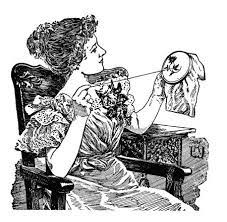
5. What are the 'ordeals' Aunt Jennifer is surrounded by, and why is it significant that the poet uses the word 'ringed'? What are the meanings of the word 'ringed' in the poem?
The ordeals refer to the difficulties and oppression Aunt Jennifer experiences in her married life and society, lack of freedom, fear, and constant control.
The word ‘ringed’ has a double meaning:
Literally, her fingers are encircled by her wedding ring.
Figuratively, she is surrounded or trapped by hardships throughout her life.
The use of ‘ringed’ suggests that she is constrained and enclosed by her struggles, unable to escape their influence.
6. Why do you think Aunt Jennifer created animals that are so different from her own character? What might the poet be suggesting through this difference?
Aunt Jennifer’s tigers are bold, fearless, and proud—qualities she lacks in real life.
The poet uses this contrast to show that art allows Aunt Jennifer to express the courage and freedom she cannot achieve in her personal life.
Through this, Adrienne Rich may be suggesting that creativity and imagination provide a space for empowerment, even under oppression.
7. Interpret the symbols found in this poem
Tigers – Courage, strength, independence, and freedom.
Wool and needle – Daily life, domesticity, and the effort required to create art despite restrictions.
Wedding band – Patriarchal oppression, marital constraints, and societal expectations.
Green world / topaz colors – Vibrancy, life, and the freedom that exists in imagination and art.
8. Do you sympathize with Aunt Jennifer? What is the attitude of the speaker towards Aunt Jennifer?
Yes, readers are encouraged to sympathize with Aunt Jennifer because she is trapped and oppressed, yet she still finds a way to express herself through art.
The speaker’s attitude is observant and compassionate. Adrienne Rich portrays Aunt Jennifer with empathy, highlighting her struggles while also admiring the courage reflected in her tigers.
Additional Observations
Colours in the poem:
Topaz – bright, precious, symbolizes vitality and brilliance of the tigers.
Green – represents life, freedom, and the natural world where the tigers live confidently.
Repetitive sounds:
Alliteration like “fingers fluttering” and “prance proud” adds musicality and emphasizes movement and delicacy.
These sound patterns highlight contrasts between the fragile, oppressed Aunt Jennifer and the bold, powerful tigers.
About the Author – Adrienne Rich
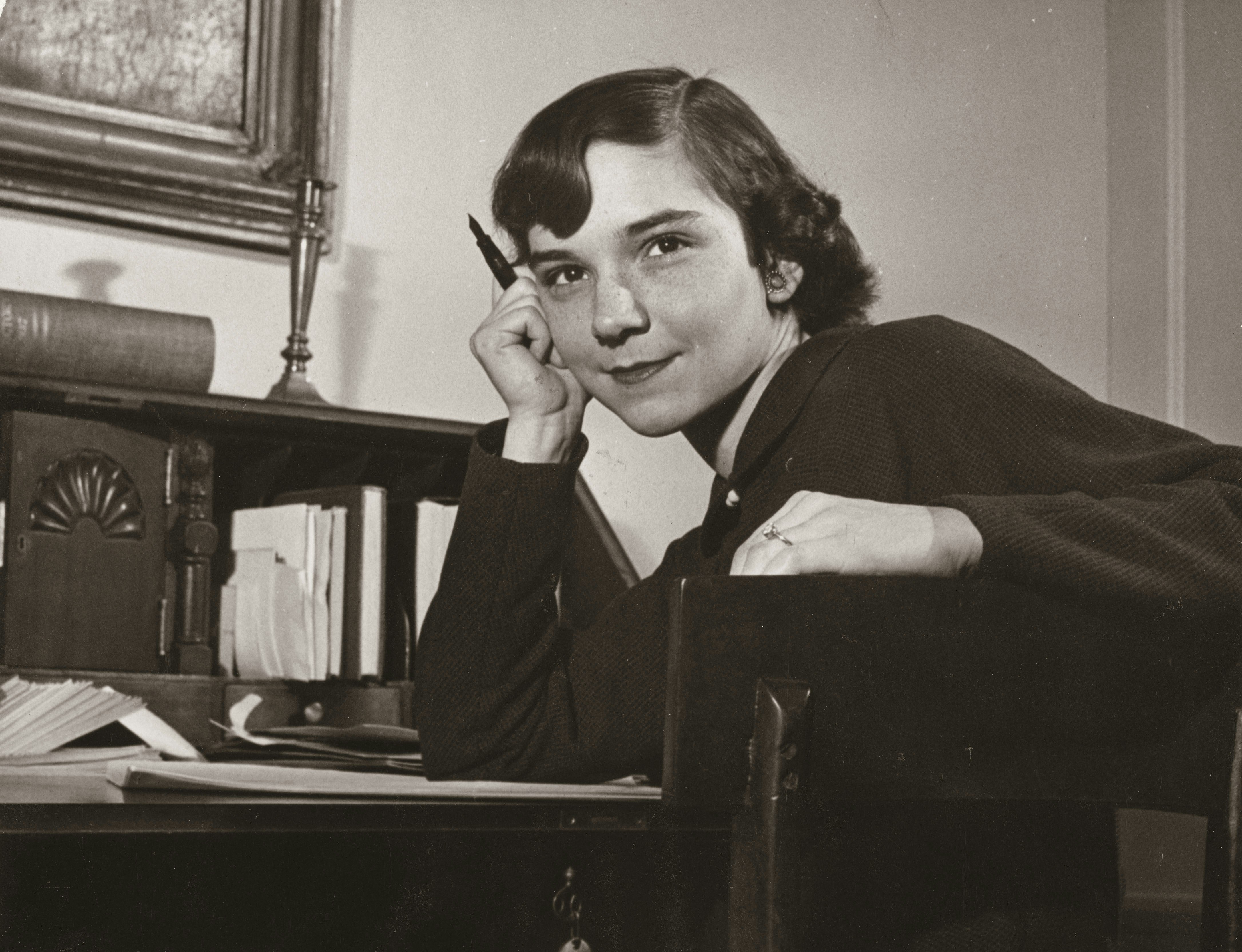
Adrienne Rich (1929–2012) was an acclaimed American poet, essayist, and feminist. She is known for her powerful writings on women’s rights, social justice, and personal freedom. Rich’s poetry often highlights the struggles of women in a patriarchal society, their suppressed voices, and their quest for identity and independence.
In Aunt Jennifer’s Tigers, Rich uses simple yet vivid language to depict the contrast between oppression and courage, showing her concern for gender inequality. Her works have inspired generations of readers and students to reflect on social issues and the power of self-expression through art and writing.
Master Poems Like Aunt Jennifer’s Tigers
Schedule Your Demo!
Themes of Aunt Jennifer’s Tigers Poem
Oppression of Women – The poem highlights how women like Aunt Jennifer are restricted by patriarchal norms and societal expectations. She is burdened by marriage and fear, symbolized by the “massive weight of Uncle’s wedding band.”
Courage and Freedom – The tigers Aunt Jennifer embroiders represent boldness, fearlessness, and independence—qualities she lacks in her real life. They symbolize the freedom and confidence women aspire to.
Art as a Medium of Expression – Through her embroidery, Aunt Jennifer expresses her inner desires and suppressed strength. Art becomes a way to assert herself even under oppression.
Contrast Between Reality and Imagination – Aunt Jennifer’s timid and fearful life contrasts sharply with the fearless, prancing tigers, showing how imagination and creativity can offer escape and empowerment.
Endurance Beyond Life – The tigers continue to live boldly even after Aunt Jennifer’s death, symbolizing the lasting power of art and courage, beyond personal suffering.
Symbolism in Aunt Jennifer’s Tigers
Tigers – The tigers symbolize courage, fearlessness, independence, and freedom. They are a reflection of the strength and boldness Aunt Jennifer admires but cannot express in her life.
Wool and Needle – These represent domestic life and the effort required to create art. Aunt Jennifer’s struggle with the needle shows her physical weakness and the emotional burden of her life.
Uncle’s Wedding Band – The wedding ring symbolizes oppression, control, and the constraints of a patriarchal society. Its “massive weight” emphasizes how restrictive marriage and societal norms can be for women.
Colors (Topaz and Green) – Topaz symbolizes brilliance, vitality, and beauty, while green represents life, freedom, and the natural, fearless world of the tigers.
Ringed Hands – The word “ringed” has a dual meaning: literally encircled by her wedding ring, and metaphorically trapped or surrounded by the hardships of life.
Poetic Devices in Aunt Jennifer’s Tigers
Imagery – Vivid descriptions like “bright topaz denizens of a world of green” create a visual picture of the tigers’ beauty and boldness.
Alliteration – Repetition of sounds, e.g., “fingers fluttering” and “prance proud,” adds musicality and emphasizes movement and delicacy.
Symbolism – Objects and actions, such as the tigers, wedding band, and embroidery, convey deeper meanings about freedom, oppression, and creativity.
Metaphor – The “massive weight of Uncle’s wedding band” metaphorically represents the burden of patriarchal control.
Contrast – The poem contrasts Aunt Jennifer’s fearful, oppressed life with the fearless tigers, highlighting the difference between reality and imagination.
Personification – The tigers are described as living and moving boldly, giving them human-like courage and confidence.

Key Takeaways from Aunt Jennifer’s Tigers
Contrast Between Freedom and Oppression – The poem highlights the difference between Aunt Jennifer’s oppressed life and the fearless tigers she creates in her embroidery.
Symbolism of Tigers – The tigers represent courage, independence, and strength—qualities Aunt Jennifer lacks but admires.
Burden of Patriarchy – The “massive weight of Uncle’s wedding band” symbolizes the control and restrictions imposed on women in a patriarchal society.
Art as a Means of Expression – Aunt Jennifer uses embroidery to express her inner desires and strength, showing how creativity can offer freedom.
Enduring Power of Art – Even after Aunt Jennifer’s death, her tigers continue to prance boldly, emphasizing that art preserves courage and individuality beyond personal limitations.
Themes to Remember – Oppression of women, courage and freedom, contrast between reality and imagination, and the power of self-expression through art.
Literary Devices – Rich imagery, symbolism, alliteration, metaphor, contrast, and personification make the poem vivid and meaningful.
Analysis of Aunt Jennifer’s Tigers
Adrienne Rich’s Aunt Jennifer’s Tigers is a short yet powerful poem that explores the themes of oppression, freedom, and artistic expression. The poem uses the contrast between Aunt Jennifer and the tigers she embroiders to highlight the limitations imposed on women in a patriarchal society.
1. Character Analysis
Aunt Jennifer: She is portrayed as a timid, oppressed woman weighed down by societal expectations and marital responsibilities. Her trembling hands and difficulty in sewing symbolize her fear, weakness, and lack of independence.
Tigers: In contrast, the tigers symbolize courage, pride, and freedom. They are bold, fearless, and unrestrained, representing the qualities Aunt Jennifer longs for but cannot express in her real life.
2. Themes and Ideas
Oppression of Women: The poem emphasizes the patriarchal control that restricts Aunt Jennifer’s freedom. Her wedding band represents the societal and marital pressures that dominate her life.
Courage and Freedom: Through the tigers, Rich conveys the idea that freedom and boldness exist as ideals, even when reality suppresses them.
Art as Empowerment: Aunt Jennifer uses embroidery to express herself, showing that creativity can serve as a means to reclaim power and voice, even under oppression.
Endurance Beyond Life: The tigers’ fearless existence after Aunt Jennifer’s death symbolizes the lasting impact of art and the resilience of human spirit beyond personal suffering.
3. Literary Techniques
Imagery: Vivid visual images like “bright topaz denizens of a world of green” bring the tigers to life and contrast them with Aunt Jennifer’s constrained reality.
Symbolism: Tigers (freedom, strength), wedding band (oppression), wool and needle (daily life and artistic expression).
Alliteration: Words like “fingers fluttering” and “prance proud” emphasize movement and delicacy.
Metaphor and Contrast: The “massive weight of Uncle’s wedding band” metaphorically conveys patriarchal oppression, while the contrast between tigers and Aunt Jennifer highlights the gap between reality and desire.
4. Tone and Mood
The tone is empathetic and observant, showing compassion for Aunt Jennifer’s struggles while also admiring her artistic expression.
The mood shifts from somber and constrained (Aunt Jennifer’s life) to vivid and empowering (the tigers), emphasizing hope and resilience through art.
5. Significance
The poem is significant for its feminist message, drawing attention to women’s suppressed voices and the societal restrictions they face.
It shows how art and creativity can serve as a silent protest, allowing expression and empowerment even in constrained circumstances.
Readers Also Read
The Tiger King – A satirical tale about pride, fate, and human folly as a king hunts 100 tigers, ignoring a prophecy.
Keeping Quiet – Pablo Neruda’s poem urging silence and introspection to understand oneself and the world.
Poets and Pancakes – A humorous look at life in Gemini Studios, exploring creativity, identity, and work.
My Mother at Sixty-Six – Kamala Das reflects on her mother’s aging, highlighting love, loss, and the passage of time.
Lost Spring – Stories of underprivileged children deprived of childhood, exploring poverty and social injustice.

Learn More About Poems Like Aunt Jennifer’s Tigers with PlanetSpark
Understanding poems like Aunt Jennifer’s Tigers can be challenging. At PlanetSpark, we help students grasp literary concepts easily and confidently.
With PlanetSpark, students can:
Understand Poems Clearly – Break down stanzas, meanings, and symbolism step by step.
Build Reading Comprehension – Learn how to analyze poems and extract key ideas effectively.
Enhance Writing Skills – Practice writing summaries, analyses, and answers in simple, structured ways.
Boost Critical Thinking – Interpret themes, literary devices, and the poet’s message confidently.
Interactive Learning – Participate in fun exercises, quizzes, and discussions to make literature engaging.
Exam Preparation – Gain confidence to tackle class 12 English questions with ease.
PlanetSpark makes learning English literature engaging, practical, and effective for students, helping them excel academically while enjoying the process.
Conclusion
Aunt Jennifer’s Tigers by Adrienne Rich is a short but powerful poem that explores women’s struggles, courage, and the power of artistic expression. Through the fearless tigers, Rich shows how creativity can serve as a medium for expressing hidden desires and independence, even under oppression. The poem highlights the contrast between reality and imagination, fear and freedom, making it a significant work in the class 12 syllabus. Understanding its themes, symbolism, and literary devices helps students appreciate not only the poem but also the broader social and feminist messages conveyed by the poet.
FAQs – Aunt Jennifer’s Tigers
Q1. Who is the poet of Aunt Jennifer’s Tigers?
Adrienne Rich, an American poet and feminist, wrote Aunt Jennifer’s Tigers.
Q2. What is the main theme of the poem?
The main theme is the oppression of women in a patriarchal society and their longing for freedom, expressed through art.
Q3. What do the tigers symbolize?
The tigers symbolize courage, pride, independence, and fearlessness—qualities Aunt Jennifer admires but cannot express in her life.
Q4. What does the wedding band represent?
The wedding band represents patriarchal control, marital oppression, and societal restrictions placed on women.
Q5. Why does Aunt Jennifer’s embroidery matter in the poem?
It shows how art allows her to express strength and courage she cannot live in real life. The tigers reflect her hidden desires for freedom.
Q6. Why is the poem included in class 12 syllabus?
The poem is included because it highlights social issues, gender inequality, and literary techniques in a concise, meaningful way, making it suitable for analysis and discussion.
Q7. What literary devices are prominent in the poem?
Imagery, symbolism, alliteration, metaphor, contrast, and personification are used to convey the poem’s message effectively
Download Free Worksheets
Personalized Communication Report
Record a video to get a AI generated personalized communication report for your child

Hi There, want to try these
tips for your child with
LIVE with our expert coach?
Let's check your child's
English fluency

